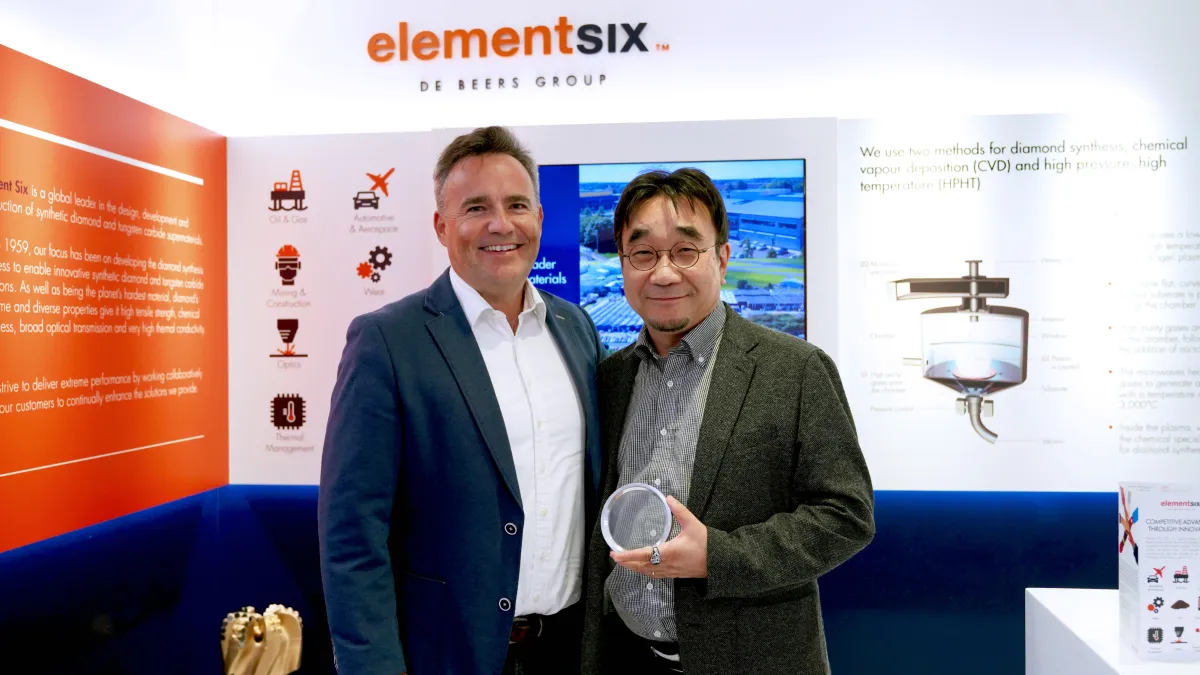Copyright techcrunch

In the race to develop the next generation of high-performance semiconductor devices, thermal management has emerged as a critical bottleneck. From AI accelerators in hyperscale data centers to RF amplifiers in defense and telecommunications, the ability to efficiently dissipate heat is now a defining factor in chip performance, reliability, and cost of ownership. Addressing this challenge requires innovative thermal materials, and in this, few materials can compete with synthetic diamonds. In 2024, Element Six (E6) and Orbray announced a strategic partnership to develop high quality, wafer-scale single crystal diamond grown by chemical vapor deposition (CVD), aimed at unlocking synthetic diamond’s potential as both a heat spreader for high power density semiconductor devices, and as an ultra-wide bandgap semiconductor material for advanced electronic applications. Today, the partnership has achieved a key milestone that marks meaningful progress toward these goals. A First in High Quality Wafer-Scale Single Crystal Diamond Element Six and Orbray have successfully produced a 50 mm diameter single crystal synthetic diamond wafer with properties necessary for integration with high-power semiconductor applications. This achievement is not just about size or quality – which have already been demonstrated independently by the partners in the past – but about achieving both objectives simultaneously, in a scalable, repeatable manner. This was done through successful transfer of Orbray diamond heteroepitaxial growth technology onto the E6 CVD diamond synthesis platform and then applying E6’s expertise in homoepitaxial and synthetic diamond polishing. The synthetic diamond wafers have a thermal conductivity in excess of 2200 W/m·K, surface roughness below 0.5 nm, and flatness below 10 µm, and are suitable for direct bonding to next-generation semiconductors like gallium nitride (GaN). Element Six is working closely with US Defense Primes on this particular application. Historically, the industry has seen isolated successes in either high-quality single crystal CVD diamond – characterized by low defect density – or in producing larger-area substrates. Combining these two attributes has remained elusive, until now. Scalability is crucial, not only for driving down cost, but also for allowing integration of synthetic diamond into standard semiconductor processing workflows. This unlocks new possibilities for synthetic diamond heat dissipation in high-power chips and advanced packaging. It also represents an important step toward enabling its use as a wide bandgap semiconductor material in next-generation radio frequency (RF) and power electronic devices. “If you’d asked me twenty years ago whether this was possible – if you’d asked me five years ago – I would’ve said no,” said Dr. Daniel Twitchen, Chief Technologist at Element Six. “This milestone is the direct result of close collaboration, technical perseverance, and a shared vision for what synthetic diamond can enable in the semiconductor industry.” Dr. Kim Seongwoo, Executive Officer at Orbray, added: “The collaboration between E6, which possesses ultra-high-quality single crystal diamond growth technology, and Orbray, which specializes in large-diameter diamond synthesis, represents a truly ‘innovative meeting of minds’ that can accelerate the realization of a more sustainable society.” The Thermal Management Challenge As chip power densities continue to rise, existing thermal management solutions have struggled to keep pace. The most advanced AI chips, for example, generate intense heat during training and inference workloads, requiring complex and costly data center cooling systems to maintain performance and prevent failure. RF amplifiers in defense and telecom applications face similar challenges, where high temperatures can limit performance and reduce device lifetimes. Insufficient cooling leads to multiple pain points: Performance throttling: Chips are operated at below peak capacity to avoid overheating. Reduced reliability: Heat-related failures can result in costly downtime, such as outages in data centers. In mission-critical systems such failures are simply unacceptable. High cooling costs: Data centers require energy-intensive cooling systems, impacting sustainability and operating margins. Synthetic diamond, with its unmatched thermal conductivity – up to five times that of copper – offers a transformative solution. As a heat spreader, it can dramatically improve thermal dissipation, enabling chips to run faster, cooler, and more reliably. Beyond Heat Spreaders: Synthetic Diamond as a Wide Bandgap Semiconductor While the nearer-term impact of this milestone will benefit thermal management applications, its implications go further. Synthetic diamonds also hold promise as a next-generation ultra-wide bandgap semiconductor material, with the potential for new high-frequency, high-voltage applications. However, one of the barriers preventing commercial development in this area has been the lack of wafer-scale single crystal diamond with low defect density. This joint achievement by Element Six and Orbray represents meaningful progress toward addressing that gap. While further improvements in size and extended defect density are still needed to meet the stringent requirements of diamond-based electronic devices, the milestone lays critical groundwork for future innovation and development in this field. A Platform for Innovation and Advantage The 50 mm single crystal synthetic diamond platform represents more than a technical milestone – it’s a solid foundation for innovation and competitive advantage. For semiconductor packaging and thermal engineers, synthetic diamond offers new possibilities for managing heat and pushing performance boundaries. For industry leaders, it provides opportunities for commercial advantage in a highly competitive sector worth hundreds of billions of dollars. Furthermore, as semiconductors increasingly underpin critical infrastructure and strategic capabilities, synthetic diamond-enabled technologies can play a vital role in securing future technological sovereignty – a key national security priority. Looking Ahead As the industry grapples with the disruptive demands of AI, 5G, electrification, and defense modernization, versatile materials like synthetic diamonds will be essential. Element Six and Orbray’s milestone development establishes them as pioneers in this space, and they look forward to collaborating with industry partners to unlock the full potential of diamond-enabled technologies.



